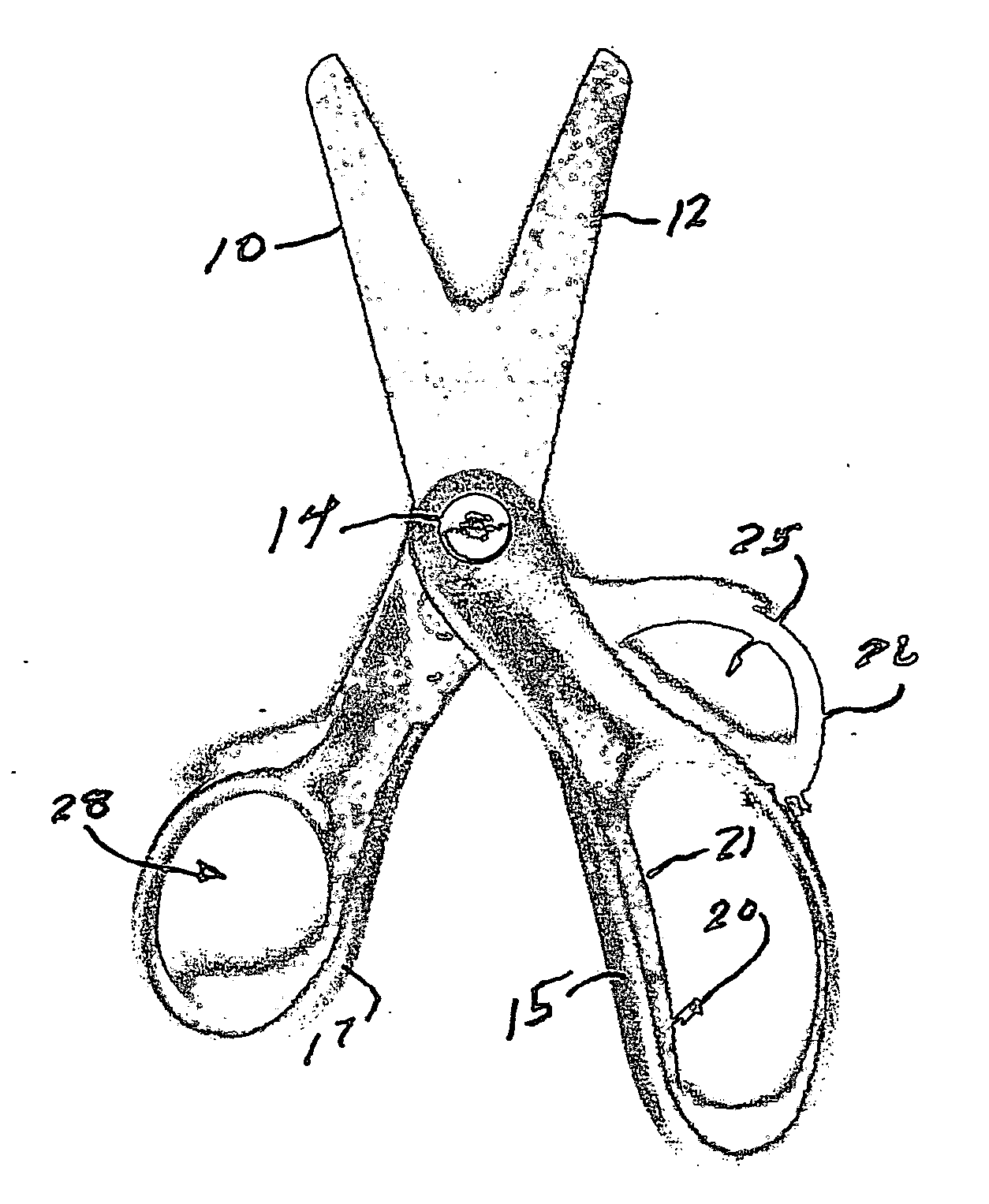Adaptive scissors
a technology of scissors and handles, applied in the direction of metal working devices, etc., can solve the problems of difficult angles and curves, inability to achieve the desired effect, and subtle adjustments of cutting detail work,
- Summary
- Abstract
- Description
- Claims
- Application Information
AI Technical Summary
Benefits of technology
Problems solved by technology
Method used
Image
Examples
Embodiment Construction
[0017] Referring to FIGS. 1 and 2, a scissors tool according to the present invention includes an upper blade 10 and lower blade 12, connected by a hinge pin 14 providing a pivot means for opening a closing action of the blades. The forward end of the blades forms the forward tip of the scissors. A handle at the rear end of the scissors comprises a lower handle part 15 attached to blade 10 and an upper handle part 17 attached to blade 12, both extending rearward from hinge pin 14. Lower handle part 15 is provided with an elongated aperture 20 of generally oval shape, and (as in most instances) including a flattened interior surface 21 in the region where the grips or handle parts 15,17 come together when the blades are closed.
[0018] On the forward end of lower handle part 15 there is a smaller secondary aperture 25 defined by a generally U-shaped ring or band 26 that is attached at its ends into the exterior forward sides of lower handle 15. This aperture 25 assures a separate loca...
PUM
 Login to View More
Login to View More Abstract
Description
Claims
Application Information
 Login to View More
Login to View More - R&D
- Intellectual Property
- Life Sciences
- Materials
- Tech Scout
- Unparalleled Data Quality
- Higher Quality Content
- 60% Fewer Hallucinations
Browse by: Latest US Patents, China's latest patents, Technical Efficacy Thesaurus, Application Domain, Technology Topic, Popular Technical Reports.
© 2025 PatSnap. All rights reserved.Legal|Privacy policy|Modern Slavery Act Transparency Statement|Sitemap|About US| Contact US: help@patsnap.com



